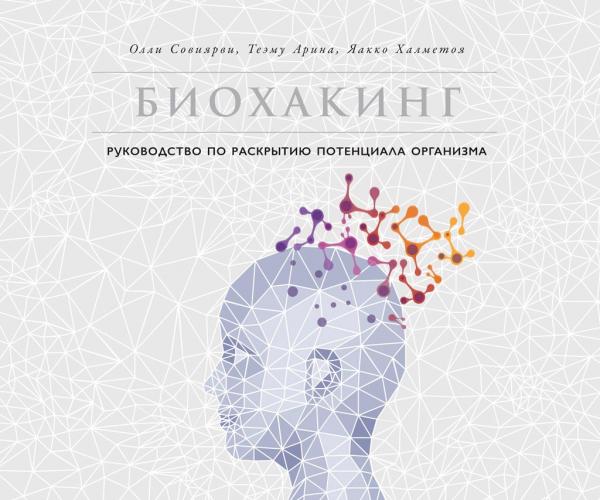44
Kong, W. et al. (2006). Effects of Taurine on Rat Behaviors in Three Anxiety Models. Pharmacology, Biochemistry, and Behavior 83 (2): 271–276.
45
El Idrissi, A. et al. (2009). Effects of Taurine on Anxiety-Like and Locomotor Behavior of Mice. Advances in Experimental Medicines and Biology 643: 207–215.
46
Aspy, D. & Madden, N. & Delfabbro, P. (2018). Effects of Vitamin B6 (Pyridoxine) and a B Complex Preparation on Dreaming and Sleep. Perceptual and Motor Skills 125 (3): 451–462.
47
Asprey, D. (2012). Bulletproof Your Sleep with Vitamin D. The Bulletproof Executive. [date of reference: 27.9.2013].
48
Johnson, S. (2001). The multifaceted and widespread pathology of magnesium deficiency. Medical Hypotheses 56 (2): 163–170.
49
Deng, X. et al. (2013). Magnesium, vitamin D status and mortality: results from US National Health and Nutrition Examination Survey (NHANES) 2001 to 2006 and NHANES III. BMC Medicine 11: 187.
50
Savage, K. & Firth, J. & Stough, C. & Sarris, J. (2018). GABA-modulating phytomedicines for anxiety: A systematic review of preclinical and clinical evidence. Phytotherapy Research 32 (1): 3–18. Review.
51
Bent, S. & Padula, A. & Moore, D. & Patterson, M. & Mehling, W. (2006). Valerian for sleep: a systematic review and meta-analysis. The American Journal of Medicine 119 (12): 1005–1012.
52
Mao, J. et al. (2014). Long-Term Chamomile Therapy of Generalized Anxiety Disorder: A Study Protocol for a Randomized, Double-Blind, Placebo-Controlled Trial. Journal of clinical trials 4 (5): 188.
53
Suzuki, M. et al. (2009). Pharmacological effects of saw palmetto extract in the lower urinary tract. Acta Pharmacologica Sinica 30 (3): 227–281.
54
Safarinejad, M. (2005). Urtica dioica for treatment of benign prostatic hyperplasia: a prospective, randomized, double-blind, placebo-controlled, crossover study. Journal of Herbal Pharmacotherapy 5 (4): 1–11.
55
Zaghi, S. & Acar, M. & Hultgren, B. & Boggio, P. & Fregni, F. (2010). Noninvasive brain stimulation with low-intensity electrical currents: putative mechanisms of action for direct and alternating current stimulation. Neuroscientist 16 (3): 285–307.
56
Cartwright, R. & Weiss, M. (1975). The effects of electrosleep on insomnia revisited. The Journal of Nervous and Mental Diseases 161 (2): 134–137.
57
Mednick, S. & Nakayama, K. & Stickgold, R. (2003). Sleep-dependent learning: a nap is as good as a night. Nature Neuroscience 6 (7): 697–698.
58
Milner, C. & Cote, K. (2009). Benefits of napping in healthy adults: impact of nap length, time of day, age, and experience with napping. Journal of Sleep Research 18 (2): 272–281.
59
Mednick, S. et al. (2002). The restorative effect of naps on perceptual deterioration. Nature Neuroscience 5 (7): 677–681.
60
Reyner, L. & Horne, J. (1997). Suppression of sleepiness in drivers: combination of caffeine with a short nap. Psychophysiology 34 (6): 721–725.
61
Morris, C. & Aeschbach, D. & Scheer, F. (2011). Circadian system, sleep and endocrinology. Molecular and Cellular Endocrinology 349 (1): 91–104.
62
Waye, K. & Clow, A. & Edwards, S. & Hucklebridge, F. & Rylander, R. (2003). Effects of nighttime low frequency noise on the cortisol response to awakening and subjective sleep quality. Life Sciences 72 (8): 863–875.
63
Scheer, F. & Buijs, R. (1999). Light affects morning salivary cortisol in humans. The Journal of Clinical Endocrinology & Metabolism 84 (9): 3395–3398.
64
Ryynänen, J. (2014). Pleiotropy of vitamin D-mediated gene regulation. Väitöskirja, Itä-Suomen yliopisto. [date of reference: 21.9.2014]
65
Loftas, T. et al. (1995). Dimensions of Need. An Atlas of Food and Agriculture. Food and Agriculture Organization of the United Nations.
66
Andrade, A. & Greene, G. & Melanson, K. (2008). Eating slowly led to decreases in energy intake within meals in healthy women. Journal of the Academy of Nutrition and Dietetics 108 (7): 1186–1191.
67
King, B. & Townsend-Nicholson, A. (2008). Involvement of P2Y1 and P2Y11 purinoceptors in parasympathetic inhibition of colonic smooth muscle. Journal of Pharmacology and Experimental Therapeutics 324 (3): 1055–1063.
68
Abels, J. et al. (1959). The physiologic mechanism of vitamin B12 absorption. Acta Medica Scandinavica 165: 105–113.
69
Kassarjian, Z. & Russell, R. (1989). Hypochlorhydria: a factor in nutrition. Annual Reviews Nutrition 9: 271–285. Review.
70
Lau, Y. & Ahmed, N. (2012). Fracture risk and bone mineral density reduction associated with proton pump inhibitors. Pharmacotherapy 32(1): 67–79.
71
Tennant, S. et al. (2008). Influence of gastric acid on susceptibility to infection with ingested bacterial pathogens. Infection and Immunity 76 (2): 639–645.
72
Sarzynski, E. & Puttarajappa, C. & Xie, Y. & Grover, M. & Laird-Fick, H. (2011). Association between proton pump inhibitor use and anemia: a retrospective cohort study. Digestive Diseases and Sciences 56 (8): 2349–2353.
73
Lam, J. & Schneider, J. & Zhao, W. & Corley, D. (2013). Proton pump inhibitor and histamine 2 receptor antagonist use and vitamin B12 deficiency. The Journal of The American Medical Association 310 (22): 2435–2342.
74
Theisen, J. et al. (2000). Suppression of gastric acid secretion in patients with gastroesophageal reflux disease results in gastric bacterial overgrowth and deconjugation of bile acids. Journal of Gastrointestinal Surgery 4 (1): 50–54.
75
Helander,
